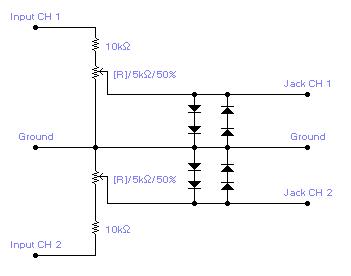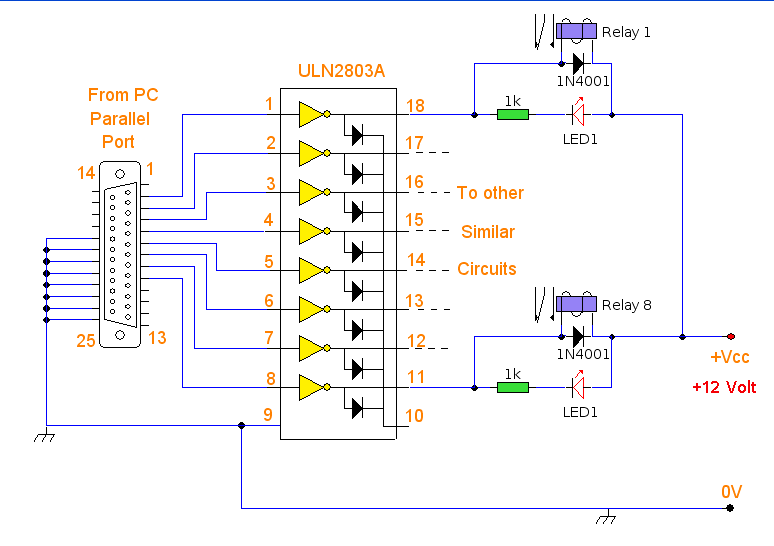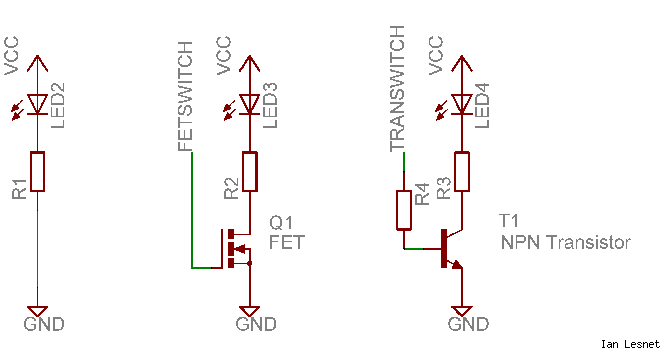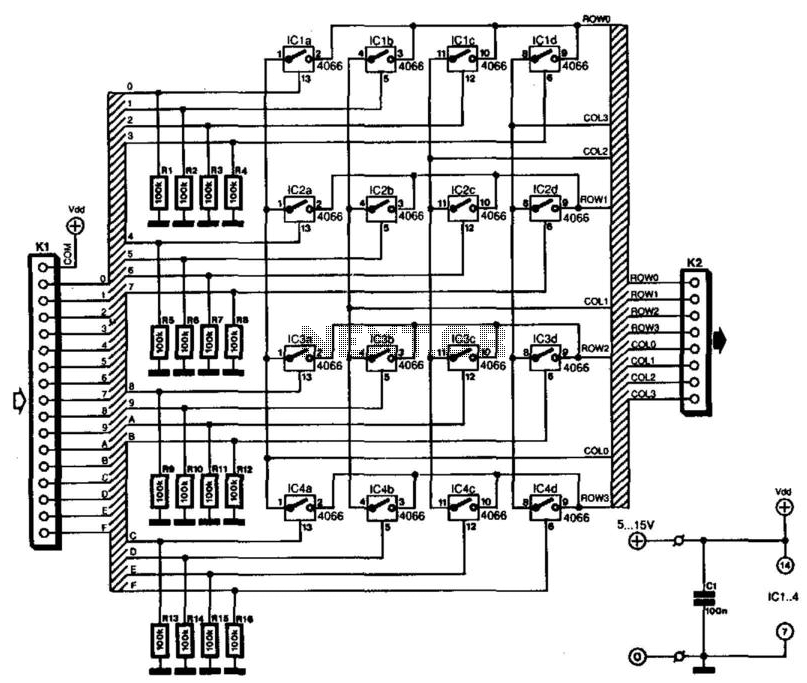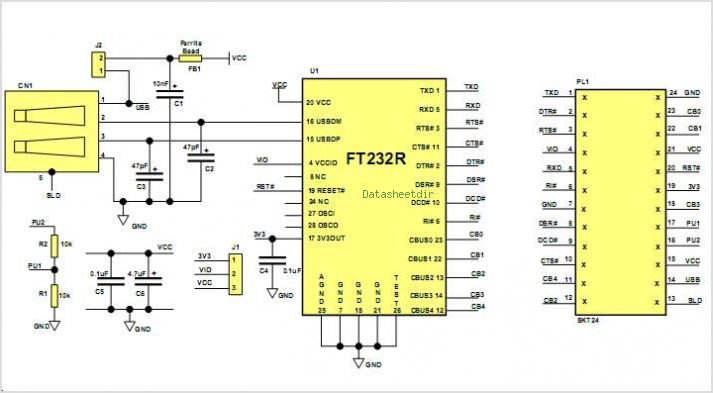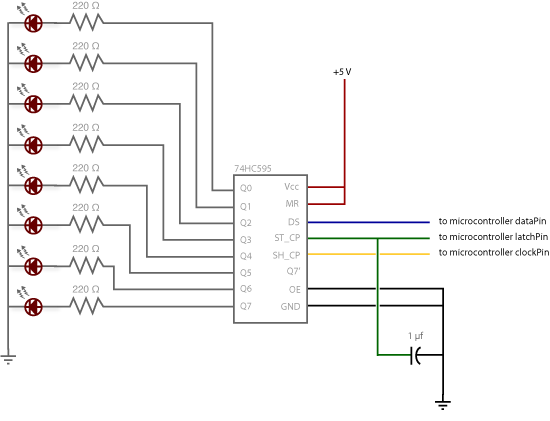
Bus Description RS423 Serial Interface

The EIA/TIA-423 Unbalanced (Single-Ended) interface specifies a single, unidirectional driver with multiple receivers (up to 10). It outlines the electrical characteristics of the unbalanced voltage digital interface circuit, typically implemented in integrated circuit technology, which can be used for the interchange of serial binary signals between Data Terminal Equipment (DTE) and Data Circuit-Terminating Equipment (DCE), or in any point-to-point interconnection of serial binary signals between digital devices. The Telecommunications Industry Association's EIA/TIA-449 defines a general-purpose 37-position interface for DTE and DCE employing serial binary data interchange. This standard serves as a mechanical interface for the transmission of balanced and unbalanced signals among various higher-end computers, media, and multimedia peripherals. EIA/TIA-530, which is a high-speed 25-position interface for DTE and DCE, including an alternative 26-position connector, serves as a replacement for EIA-449, utilizing a DB-25 (EIA-232-D) connector instead of a 37-pin connector while maintaining the essential electrical signals. Typically, EIA-422 and RS-423 systems are not compatible. EIA-449 cabling for EIA-422 sends and receives data as differential pairs and control signals as single-ended, whereas EIA-423 cabling transmits and receives single-ended data and control signals. Receiving a single-ended signal in EIA-423 is achieved by grounding the 'B' side of the differential receiver at the connector. If the system adheres to the EIA-449 cabling specification, then one 'B' side of the differential receiver on the EIA-423 side will be grounded at the connector, prompting the differential driver on the EIA-422 side to drive ground. The EIA-422 side also employs a termination resistor between the ends of its differential receiver, creating a 120-ohm short to ground for the EIA-423 driver. If systems were connected without regard for RS-499, the system would revert to EIA-423 (single-ended) distance and data rate, primarily due to the single-ended driver on the RS-423 side, while the receiver on the RS-422 side would accept the single-ended EIA-423 signal and ground on its differential pair.
The EIA/TIA-423 interface is a critical standard in the realm of telecommunications, particularly for applications requiring the reliable transmission of serial binary data. The architecture of this interface supports a unidirectional communication model, where a single driver can support multiple receivers, making it efficient for certain types of network configurations. This characteristic is particularly beneficial in scenarios where multiple devices need to receive the same data stream, such as in broadcasting applications or multi-device control systems.
In practical applications, the EIA-423 interface is often implemented in integrated circuits designed specifically for digital communication. These circuits are engineered to handle the electrical characteristics defined in the standard, ensuring compatibility and reliability across various devices. The integration of this interface into digital devices allows for seamless communication between DTE and DCE, facilitating data exchange in environments such as computer networking and industrial automation.
The EIA/TIA-449 and EIA/TIA-530 interfaces further enhance the capabilities of the EIA-423 standard by providing mechanical and electrical compatibility with a broader range of devices. The transition from a 37-pin to a 25-pin connector in EIA-530 simplifies connections while preserving essential signal integrity. This adaptability is crucial in modern systems where space and efficiency are paramount.
Understanding the differences between EIA-422 and EIA-423 is vital for engineers working with these standards. The differential signaling in EIA-422 offers advantages in noise immunity and signal integrity over longer distances, while the single-ended approach of EIA-423 simplifies the design and implementation of certain applications. However, care must be taken when interfacing these two standards, as improper connections can lead to signal degradation or system failure.
Overall, the EIA/TIA-423 standard plays a significant role in the design and implementation of digital communication systems, providing a framework for reliable data transmission in various applications. Its specifications ensure that engineers can develop systems that meet the demands of modern telecommunications while maintaining compatibility with existing technologies.The EIA/TIA-423 Unbalanced (Single-Ended) interface; specifies a single, unidirectional driver with multiple receivers (up to 10). ". Specifies the electrical characteristics of the unbalanced voltage digital interface circuit, normally implemented in integrated circuit technology, that may be employed when specified for the interchange of serial b
inary signals between Data Terminal Equipment (DTE) and Data Circuit-Terminating Equipment (DCE) or in any point-to-point interconnection of serial binary signals between digital equipment. " `Telecommunications Industry Association` EIA/TIA-449 ; General Purpose 37-Position Interface fro Data terminal Equipment and Data Circuit-Terminating Equipment Employing Serial binary Data Interchange A serial mechanical interface standard for transmission of balanced and unbalanced signals between a variety of higher-end computer, media, and multimedia peripherals.
EIA/TIA-530 ; High Speed 25-Position Interface for Data Terminal Equipment and Data Circuit-Terminating Equipment, Including Alternative 26-Position Connector EIA530 is a replacement for EIA-449 that uses a DB-25 ( EIA-232-D ) connector instead of a 37-pin connector, while keeping the most important electrical signals intact. Normally EIA422 and RS-423 systems may not be connected together. EIA-449 cabling of 422 sends and receives data as differential pairs and control signal as single-ended, but for 423 cabling it sends and receives single-ended data and control signals.
Receiving the single ended signal in 423 is accomplished by grounding the `B` side of the differential receiver at the connector. So if the system follows the EIA-449 (cabling) specification than one (B) side of the differential receiver of the 423 side will be grounded at the connector forcing the differential driver on the 422 side to drive ground.
The EIA422 side also uses a termination resistor between the ends of its differential receiver, providing a serious 120 ohm short to ground for the 423 driver. If the systems were to be connected together (with out regard for RS499) than the system would revert to EIA423 (single-ended) distance and data rate ~ Only because the driver on the RS423 side is single ended, while the receiver on the RS422 side would receive the single-ended 423 signal and ground on its differential pair.
🔗 External reference
The EIA/TIA-423 interface is a critical standard in the realm of telecommunications, particularly for applications requiring the reliable transmission of serial binary data. The architecture of this interface supports a unidirectional communication model, where a single driver can support multiple receivers, making it efficient for certain types of network configurations. This characteristic is particularly beneficial in scenarios where multiple devices need to receive the same data stream, such as in broadcasting applications or multi-device control systems.
In practical applications, the EIA-423 interface is often implemented in integrated circuits designed specifically for digital communication. These circuits are engineered to handle the electrical characteristics defined in the standard, ensuring compatibility and reliability across various devices. The integration of this interface into digital devices allows for seamless communication between DTE and DCE, facilitating data exchange in environments such as computer networking and industrial automation.
The EIA/TIA-449 and EIA/TIA-530 interfaces further enhance the capabilities of the EIA-423 standard by providing mechanical and electrical compatibility with a broader range of devices. The transition from a 37-pin to a 25-pin connector in EIA-530 simplifies connections while preserving essential signal integrity. This adaptability is crucial in modern systems where space and efficiency are paramount.
Understanding the differences between EIA-422 and EIA-423 is vital for engineers working with these standards. The differential signaling in EIA-422 offers advantages in noise immunity and signal integrity over longer distances, while the single-ended approach of EIA-423 simplifies the design and implementation of certain applications. However, care must be taken when interfacing these two standards, as improper connections can lead to signal degradation or system failure.
Overall, the EIA/TIA-423 standard plays a significant role in the design and implementation of digital communication systems, providing a framework for reliable data transmission in various applications. Its specifications ensure that engineers can develop systems that meet the demands of modern telecommunications while maintaining compatibility with existing technologies.The EIA/TIA-423 Unbalanced (Single-Ended) interface; specifies a single, unidirectional driver with multiple receivers (up to 10). ". Specifies the electrical characteristics of the unbalanced voltage digital interface circuit, normally implemented in integrated circuit technology, that may be employed when specified for the interchange of serial b
inary signals between Data Terminal Equipment (DTE) and Data Circuit-Terminating Equipment (DCE) or in any point-to-point interconnection of serial binary signals between digital equipment. " `Telecommunications Industry Association` EIA/TIA-449 ; General Purpose 37-Position Interface fro Data terminal Equipment and Data Circuit-Terminating Equipment Employing Serial binary Data Interchange A serial mechanical interface standard for transmission of balanced and unbalanced signals between a variety of higher-end computer, media, and multimedia peripherals.
EIA/TIA-530 ; High Speed 25-Position Interface for Data Terminal Equipment and Data Circuit-Terminating Equipment, Including Alternative 26-Position Connector EIA530 is a replacement for EIA-449 that uses a DB-25 ( EIA-232-D ) connector instead of a 37-pin connector, while keeping the most important electrical signals intact. Normally EIA422 and RS-423 systems may not be connected together. EIA-449 cabling of 422 sends and receives data as differential pairs and control signal as single-ended, but for 423 cabling it sends and receives single-ended data and control signals.
Receiving the single ended signal in 423 is accomplished by grounding the `B` side of the differential receiver at the connector. So if the system follows the EIA-449 (cabling) specification than one (B) side of the differential receiver of the 423 side will be grounded at the connector forcing the differential driver on the 422 side to drive ground.
The EIA422 side also uses a termination resistor between the ends of its differential receiver, providing a serious 120 ohm short to ground for the 423 driver. If the systems were to be connected together (with out regard for RS499) than the system would revert to EIA423 (single-ended) distance and data rate ~ Only because the driver on the RS423 side is single ended, while the receiver on the RS422 side would receive the single-ended 423 signal and ground on its differential pair.
🔗 External reference
